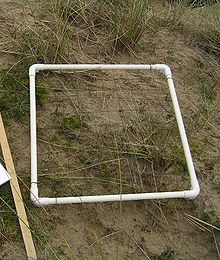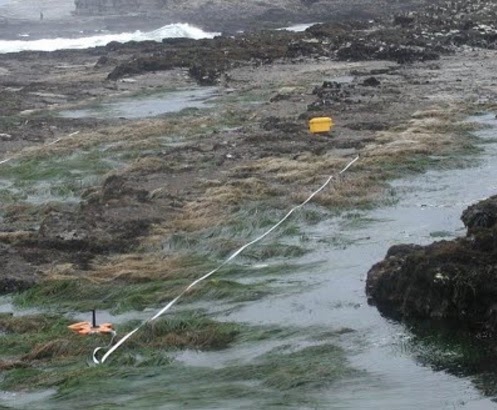The art and science of field work
Quadrats
Transects
Mobile species
Recording data
Principles of taxonomy and model organisms
Three domains or five kingdoms?
Outline of the plant and animal kingdoms
Ethology
The art and science of field work
Health and safety in carrying out field work is key. While hazards in the lab might extend to toxic chemicals and disposing of GM microorganisms, hazards in the field can be even more diverse. Terrain, weather conditions and isolation can all play into this, depending on location. It only takes a brief look at wild animal documentaries to see how venturing out into nature can pose many hazards.
On one hand, it is important to think about the safety of those who are carrying out the work, while on the other hand the integrity and health of the habitat being investigated must also be kept in mind. Human intervention and equipment can be disruptive to some species. This is doubly critical when dealing with legally protected areas that may house rare or vulnerable species.
The method of investigating species is also dependent on how that species lives. For example, point counting might work for trees but not insects. Other methods include transects that asses the length of a given section of land in set increments (e.g. every 10 metres), and even remote detection via signals given by tags.
Quadrats
Sampling of organisms must be like those annoying, attention-seeking Snapchat friends. It must be random. Random sampling can be carried out using quadrats. If you’re wondering what they are, look no further – they’re squares.

How would you make sure that your sampling is random? In a field, you could lay two long tapes perpendicularly to define the limits of the area where the samples will be taken from.

As you can see above, a tape is laid on one side of the sampling area. As you can’t see above, another tape is laid from one end of the first tape, across on the adjacent side of the sampling area (like a giant L). Then two random numbers are generated using a random numbers table. These numbers are used to determine the coordinates of the first quadrat placed on the field, by matching them on the two tapes. And voila! You have yourself a system for random sampling using quadrats….
